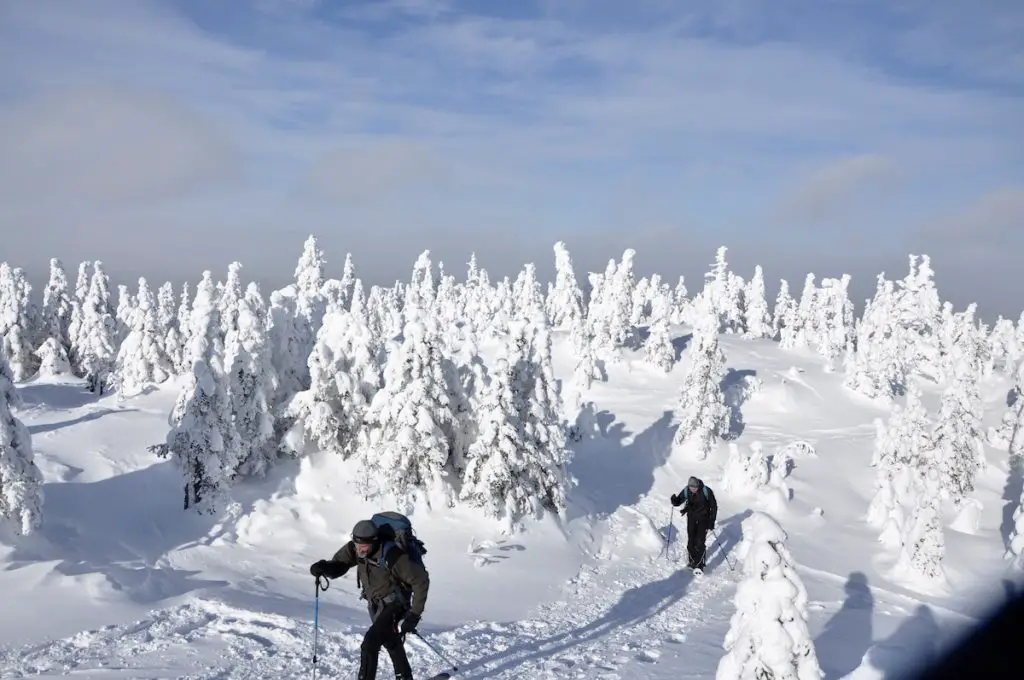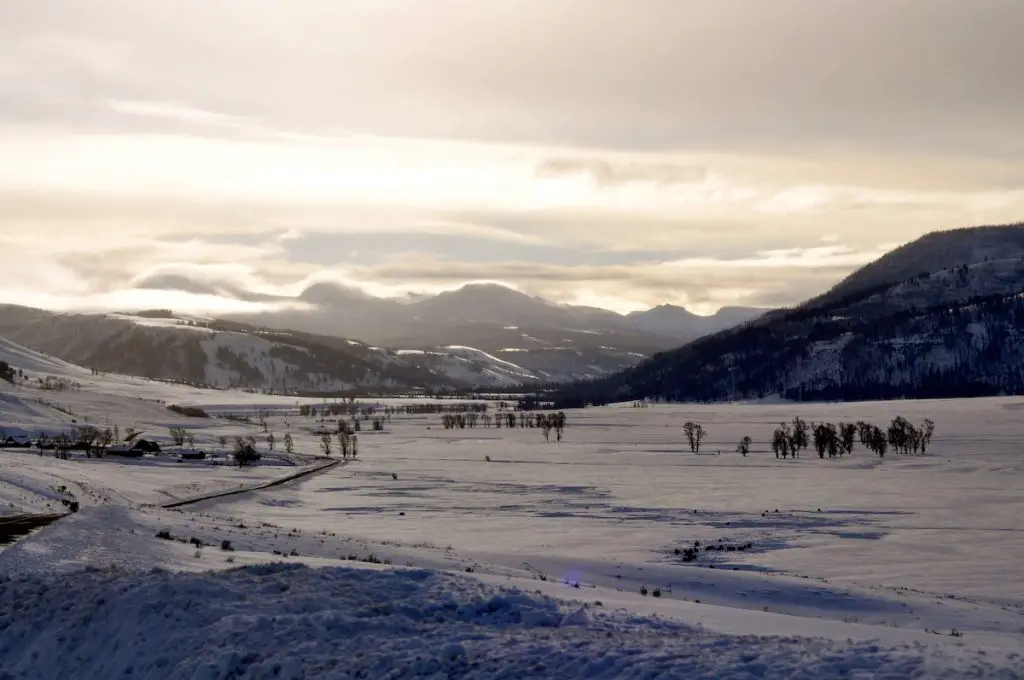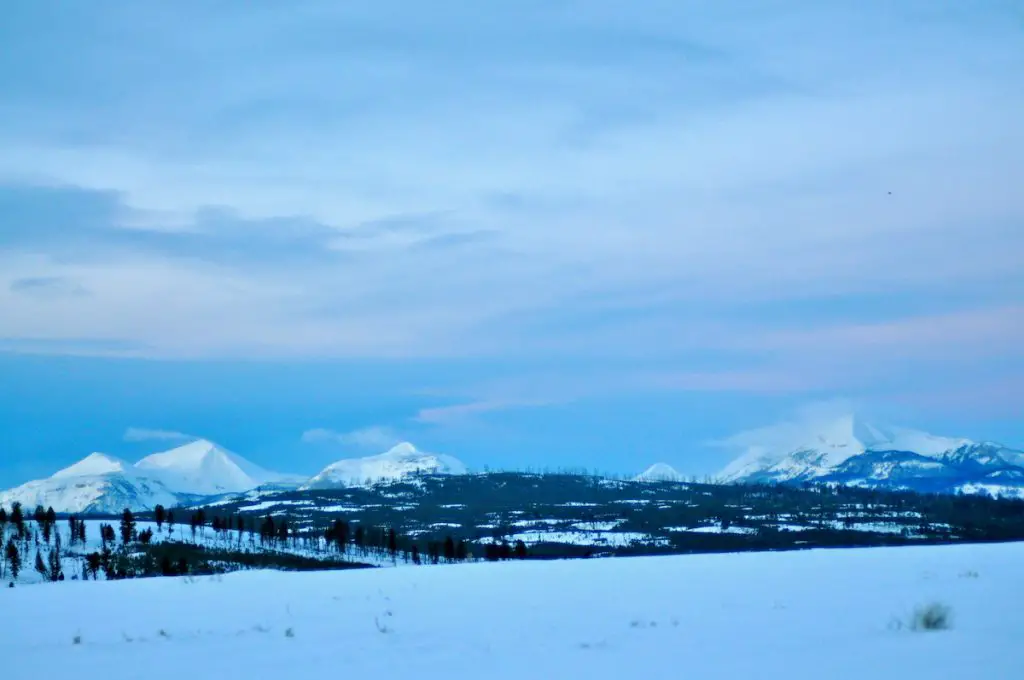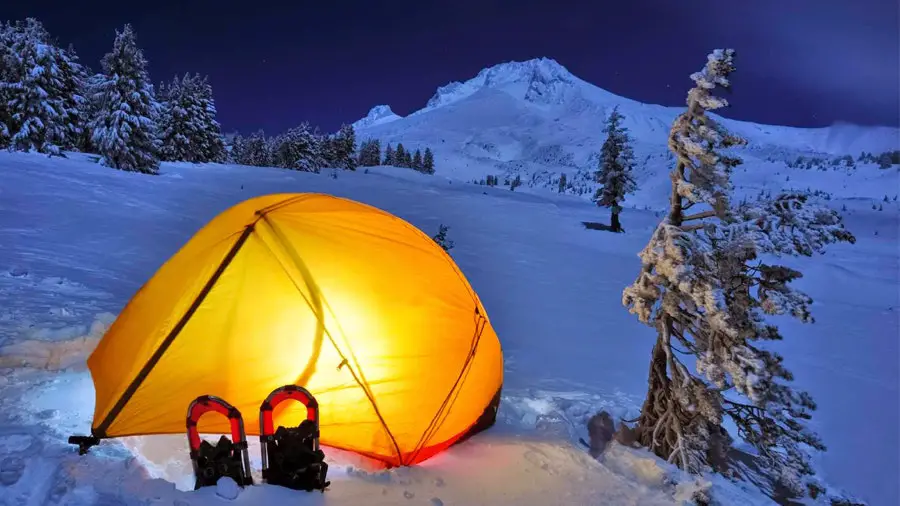For many of us, the arrival of winter means the end of outdoor excursions until spring. But as it turns out, if you have the right mindset—not to mention the right gear—it can be just as fun going outside during the winter as it is other times of the year. Hiking, skiing, snowshoeing, dogsledding, and a host of other activities can keep us active and adventurous, even when the temperature plunges and the snow starts to fall.
That includes winter camping, which has the potential to be a life-changing experience. There is nothing quite like trekking into the backcountry, setting up camp, and soaking in the solitude of the season with snow falling just outside the tent. Of course, there is a lot less margin for error when camping in those conditions, so before you go. Here are a few things you should know.
Dress in Layers
As with any winter outdoor activities, it’s best to dress in layers. This gives you a much higher degree of flexibility when it comes to temperature regulation and moisture control. A good layering system should consist of base layers that sit close to the skin that can wick perspiration from the body, keeping you warmer and safer for extended periods. Those base layers should be made of merino wool or a synthetic material that is also quick drying. When in the outdoors during any seasons, always avoid cotton apparel at all costs, as it fails all of the check boxes for a good base layer. It collects moisture, dries extremely slowly, and quickly becomes uncomfortable and even dangerous.
The mid-layer in your layering system is the one that can vary the most, depending on the temperature. This is the insulating layer that provides the most warmth and it can take the form of anything from lightweight fleece to a down jacket. As the temperature drops, the mid-layer should become thicker and warmer to meet the needs of the wearer.
The outer layer is the one that protects you—and the layers underneath—from the elements. This typically takes the form of a shell jacket that serves as a shield against rain, snow, and wind. It is usually semi-permeable, allowing moisture to escape from the inside, while keeping bad weather at bay.
Layers can be added or removed as needed throughout your winter camping adventure. If it isn’t snowing or raining, you can put the shell in your pack to avoid generating excess heat for instance. If it’s a warm, sunny winter day, you may not need the insulating layer at times. The versatility that this approach provides will help keep you warm in the worst of conditions.

Invest in a Cold Weather Sleeping Bag and Pad
It is extremely difficult to get a good night’s sleep when you’re cold, which is why you’ll want a sleeping bag and sleeping pad that are meant for use in winter conditions. Sleeping bags come with a temperature rating that indicates what conditions they can be used in comfortably. If you expect temperatures to drop to -20ºF (-28ºC), you’ll want a sleeping bag that is rated for that level of cold. If you happen to be someone who gets cold easily, you may want to go with a bag that has provide a little extra warmth just to be on the safe side.
Sleeping pads also have a rating system to help determine who well they perform in the cold, although it isn’t quite as transparent as with sleeping bags. Most pads come with an R-value, which is used to indicate which temperatures they are best designed for. The higher the R-value, the better it will perform in cold conditions. For a winter sleeping pad, look for one that has a rating of at least 5+. Anything lower than that will be akin to sleeping on the cold ground.
A 4-Season Tent
That light, airy tent that you use throughout the rest of the year isn’t going to cut it during the winter months. Instead, you’ll need a four-season tent that can block the wind, is reinforced to withstand strong gusts, and hold in warmth. These tents are much pricier than their warm-weather equivalents, but this is your shelter from potentially bad weather. When you’re looking to escape the cold and get cozy, you’ll definitely appreciate what a four-season tent delivers.

Food and Water
Staying warm and active in cold weather burns a lot of a calories and can leave you just as dehydrated as in other seasons. Because of this, you should bring plenty of food—both meals and snacks—and eat frequently throughout the day. High-calorie meals will help your body to resist the cold temperatures and keep you from getting too hungry.
Likewise, it is important to drink plenty of water. In the winter, lakes and streams could be frozen solid, but you can use your stove to melt snow for drinking and water for cooking instead. Just allow for some extra time to melt that snow, as it always takes longer to collect than you might think. You’ll also want to bring extra fuel for the trip to avoid running out.
If you’re using water bottles or hydration bladders, invest in ones that are insulated against the cold. This will help keep your drinking water from freezing and allow you to stay more hydrated throughout.
Pick the Right Campsite
Selecting the right campsite is important on any camping trip, including the winter. When looking for a place to pitch your tent, search for trees, boulders, or even cliffs that can provide a block from the wind and snow. This will help keep the tent warmer and further protect it from the elements, providing a better night sleep as a result.
Before setting up your tent, clear as much snow from the ground as possible or at the very least flatten it out. Snowshoes and skis can be especially helpful with this process. Once the tent is in place, use your hands and knees on the floor to further smooth out the surface. After you’ve been inside for a bit, the snow underneath will start to melt, but it can also refreeze, making it impossible to alter the floor after you’ve moved in.
If you’re in a mountain environment and there is a lot of powder on the ground, be sure you’re not camping under a potential avalanche chute. Even if a location provides excellent protection from the weather, you won’t want to chance getting buried by an avalanche. Move on and look for a location that is a bit safer and more secure.
Sleep with Your Clothes in the Bag
While I wouldn’t recommend actually sleeping in your clothes—other than base layers—it is a good idea to put your important items at the bottom of your sleeping bag. This will provide extra warm throughout the night and will keep those items warmer too. In the morning, when you’re ready to get dressed, you’ll feel much better pulling on clothing that is toasty warm, rather than sitting out in the cold all night long.
Watch the Weather Forecast
Before heading off on your winter camping trip, be sure to check the forecast for the days ahead. Cold temperatures and a little snow aren’t necessarily a deterrent from going, but a full-blown blizzard should be a sign to postpone. If you have cell service or wifi at the campsite, use a weather app to make sure conditions aren’t changing. Winter weather can be extremely fickle and change very quickly. Knowing when to sit tight at camp or pull the plug and go home could save your life.
Keep Your Devices and Batteries Warm
We all know that cold weather can play havoc with the batteries in our devices. In order to keep them functioning properly, they need to stay warm. Put cell phones, cameras, two-way radios, rechargeable headlamps, and other items inside your down jacket or sleeping bag to help keep them as warm as possible. If those items aren’t functioning, they aren’t useful.

Tell Someone Where You’re Going
As with any backcountry outing, be sure to let someone know where you’re going and when you expect to be back. Winter camping conditions can get dangerous and if you fail to return as expected, knowing where to come look for you can save time, effort, and even lives. This is true in the summer as well, but in the winter there is even less time to locate someone in need of assistance.
The biggest piece of advice to be cautious, use common sense, and don’t be afraid to head home if you don’t feel comfortable in a winter camping situation. However, with a little experience, the right equipment, and an adventurous spirit, there is a good chance you’ll come to love winter camping as much as you do at other times of the year.
- Gear Review: The Xero Scrambler Mid is an Ultralight Hiking Shoe for Spring - March 1, 2023
- Gear Review: Yeti Roadie 48 Wheeled Cooler - August 18, 2022
- Kristin Harila Continues Pursuit of 8000-Meter Speed Record - August 16, 2022

The other thing, be comfortable with yourself that you can spoon a good buddy to keep warm at -19’c even being wrapped in a really good sleeping bag. You kept me warm at the summit of Kilimanjaro buddy.
LOL! Eden. I’d do it again too my friend. That was a chilly night in the crater. 🙂